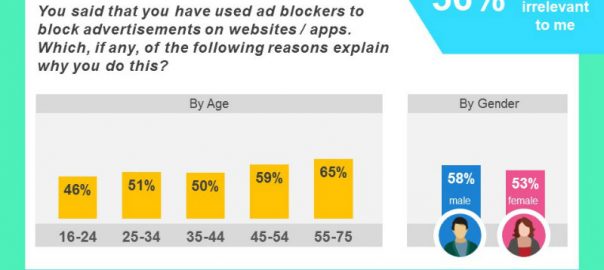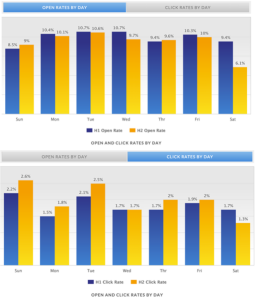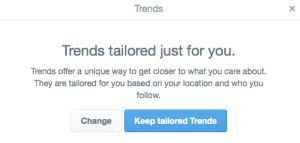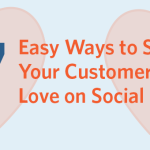With the rise of ad blocking, is an “Adblockalypse” on the horizon? As grim as it sounds, columnist Peter Minnium says it’s not all bad news and explains what advertisers can do to turn it around.

Poor, aggrieved advertising just can’t catch a break.
Even in the good old days, when families gathered in living rooms to watch TV, advertising needed to run the gauntlet to be effective: creating an opportunity to see, capturing attention, leaving a branded impression, delivering a message, and finally, changing attitudes and behavior. I’ve outlined best practices to do this in a previous post.
The internet and digital technology presented an opportunity to tip the odds in advertising’s favor. The promise of digital advertising — ad products with sight, sound, motion plus interactivity, coupled with the right-message, right-person, right-time benefit of machine targeting — is irrepressible.
Consumers, after all, have never hated all advertising — just that which is irrelevant, annoying and interruptive. Digital would fix that, right?
Except it didn’t. The digital ad industry committed a myriad of sins instead: relegating ads to page purgatory outside of the content stream, too often relying on interruption, piling multiple ads onto each page, charging for non-viewable inventory, larding ads with features that slow page load times and offering no standard brand metrics that matter — to name just a few.
Technology, the supposed savior of advertising, has now become the villain by enabling wholesale blocking of ads. Ad blocking has been around for a number of years, but until recently, it was a fairly niche activity.
In 2015, this changed. Apple announced it would allow ad-blocking apps on phones and tablets. In early 2016, Samsung followed suit, releasing a new version of its internet browser which supported ad-blocking plugins.
According to a report from Adobe and PageFair, $21.8 billion in global ad revenues was blocked in 2015, with an estimated $10.7 billion occurring in the US alone. The US blocking is expected to grow to $20.3 billion by 2016.
Is the Adblockalypse coming?
Is this the beginning of the end of advertising? Despite awareness of ad blocking rising through increased media coverage, not everyone is using it — or even planning to do so anytime soon, according to a new study conducted by Ipsos Connect (my employer). Although fielded in the UK, where ad-blocking incidence exceeds that in the US, the findings are relevant in the US.
The good news for the industry is that only 10 percent of US desktop internet users deploy ad blockers, according to comScore data from December 2015. This remained relatively stable during the second half of last year, amounting to 9.7 percent of users in December, compared with 9.5 percent in May. Ad blocking is most common among 18- to 24-year-olds — with 19 percent of males and 14 percent of females in this segment using ad-blocking software.

Further positive data can be found in the Ipsos UK study that indicates that although 18 percent of that populace claim to use ad blockers, of those currently not using ad-blocking software, 58 percent state they are unlikely to do so in the next 12 months; 25 percent are still undecided, indicating that there is ample scope for advertisers and publishers to change people’s minds and persuade them to avoid ad blockers.
Why do people want to block ads?
Why do people feel compelled to block ads? Is advertising so bad that it must be removed at all costs? The research revealed that online advertising has gained a negative reputation for being annoying, irrelevant, intrusive and sometimes downright creepy.

The main reason people use ad blockers is that ads are annoying (69 percent), and they get in the way of what people are trying to do (57 percent). There is a particular emphasis on the importance of the positioning of ads. Advertisers might think that positioning the ads to the center of the page, mid-content, is the best way to ensure it gets viewed, but it also appears to be the best way to alienate the audience.


While people can sometimes see the potential value of their data being used to offer them more targeted advertising, the problem is that it’s not always relevant. Fifty-six percent of people use ad blockers because “the ads are often irrelevant to me.”

While consumers say that they want relevant ads, they don’t want to feel like advertisers are constantly watching them Big Brother-style — like one participant from the qualitative research who was targeted based on something he mentioned in a work email.
Another problem with targeting is when the ad does not reach the intended recipient — a common occurrence in households where people are sharing devices; 51 percent of people use ad blockers to avoid this type of intrusiveness.

Is there hope for the future?
Yes. The research showed that many users are willing to consider not using ad-blocking software — but there have to be compelling reasons for them to do so.
This will require significant change from all of MAdTech — media, advertisers and technology platforms must work together to enhance the overall user experience that the three are equal partners in delivering.
For advertisers, the answer is the same as it has always been: The ads need to be engaging, relevant and a good fit with the content.
In addition to just plain ol’ great ads, high-quality native advertising can be an excellent way to deal with ad blocking. We know that well-produced branded content can engage users and profoundly influence consumer attitudes, including intent to buy.
For media owners, the news is not all bad. The Ipsos Connect study showed that users are prepared to be flexible and enticed into turning off their ad-blocking software if the content is something they truly want or value.
Media must optimize more than content, however. While intrusive ads have been most vocally blamed for the rise of ad blocking, efforts to improve the user experience must go beyond just ads. Publishers must re-examine their site architecture and technology to enhance load times and ad integration and lessen clutter.
Users do generally recognize that there needs to be a value exchange for content. This doesn’t mean they’re willing to pay for it: Only 17 percent of ad blockers claimed to be prepared to pay to access content if it meant they didn’t see any ads.
However, an ad-light approach does have appeal. One in three users was positive toward an ad-light experience with fewer advertisements shown in exchange for turning off their ad blockers.

For technology platforms and partners, embracing the user experience mantra will yield tangible benefits — as early experiments have started to show. Facebook’s Instant Articles, for example, seek to solve for the perceived sluggishness of some content sites, which likely drives readers away. Similarly, Google’s Accelerated Mobile Pages (AMP) help publishers speed up their sites by eliminating slow and unnecessary components.
The IAB, my former employer, is also paving the way in the industry to enhance user experience. “Looking back now, our scraping of dimes may have cost us dollars in consumer loyalty,” IAB SVP of Technology Scott Cunningham wrote in a company post. In response, the IAB introduced its “LEAN” program, a set of creative standards meant to produce ads that are lighter and less resource-intensive.
Woe is advertising?
Ad blocking represents the latest challenge to advertising — one in a long line of obstacles the industry has had to overcome. Unlike previous hurdles, this one requires a coordinated response from all quarters of the digital ecosystem. MAdTech — media, advertising and technology — must come together to fundamentally change the consumer experience.
Only then will the industry deliver on the long-promised but never realized digital advertising revolution.
Some opinions expressed in this article may be those of a guest author and not necessarily Marketing Land. Staff authors are listed here.
Marketing Land – Internet Marketing News, Strategies & Tips
(41)
Report Post









